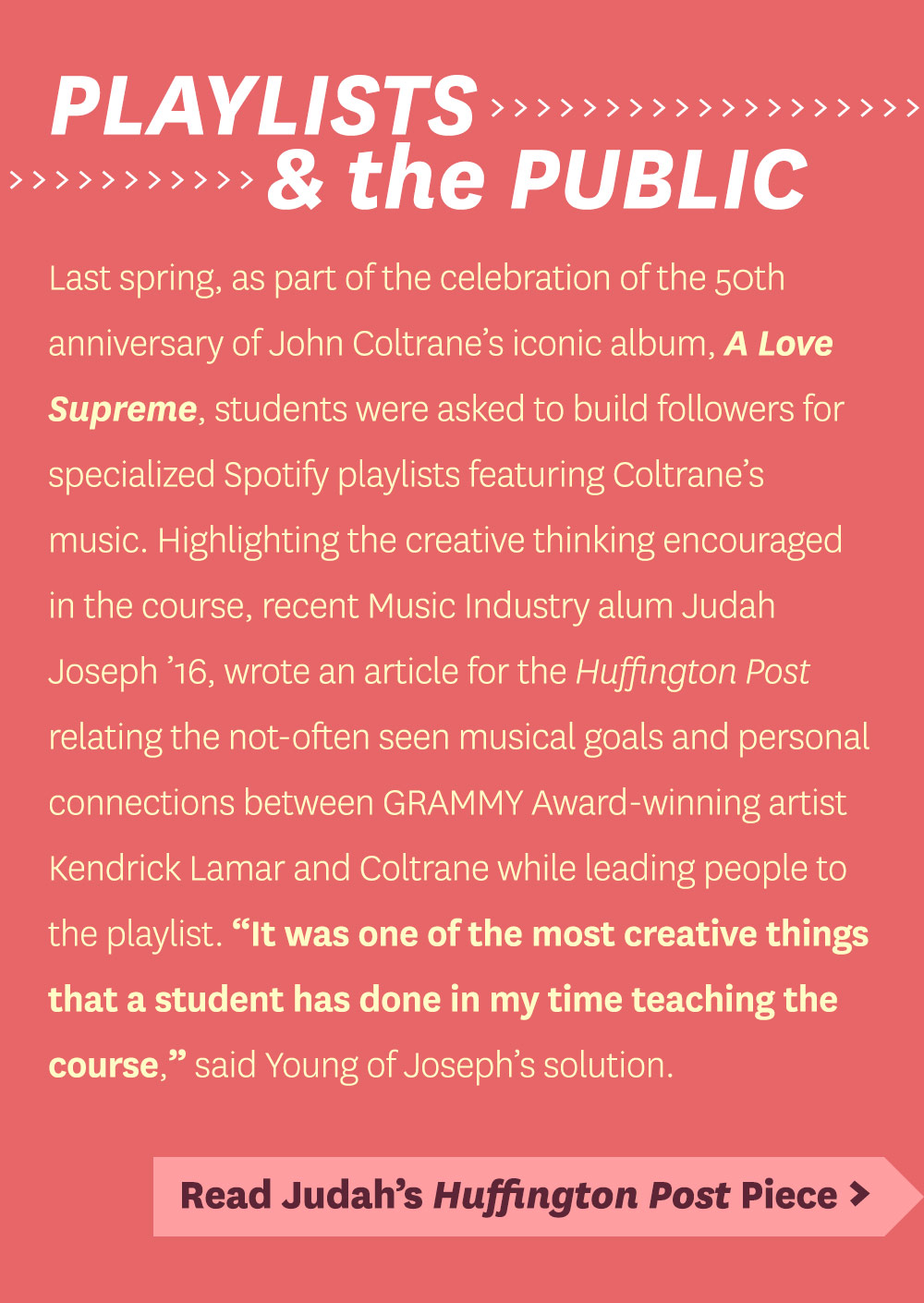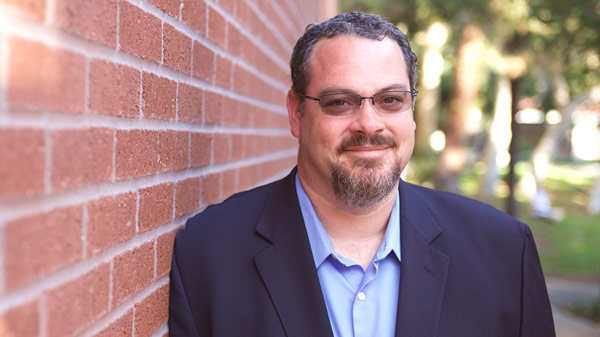
Music Media Solutions
By Noah Phillips Reardon & Gabriel Bradley
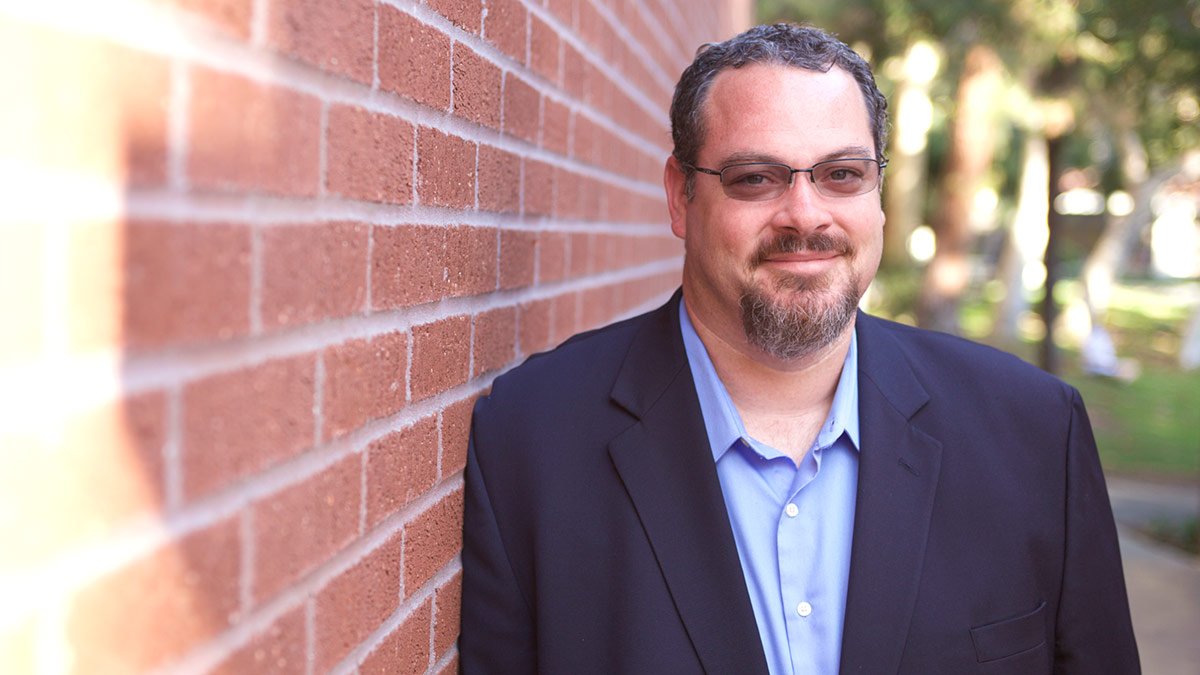
Paul Young, associate chair of the Music Industry program. (Photo/Dario Griffin)
One week they might build a fan base for an up and coming pop singer. In the weeks after they’ll develop a new audience for a jazz legend and pitch innovative business strategies to executives from a major music company.
These are just some of the topics that students tackle in the Music Media Solutions course through USC Thornton’s Music Industry program and unlike classes where the work is theoretical, the assignments are all real-world situations.
“These students interact with professionals from the music industry, but it’s on our turf,” said Paul Young, associate chair of the Music Industry program. “That blend of industry personalities with a classroom environment helps students learn things they probably wouldn’t learn through traditional internships or lectures.”
Each week, leaders from major music companies visit the class and share information about the challenges they face in their work, and students are assigned to come up with creative solutions. A good grade is just the beginning. Past students have seen their ideas implemented, resulting in real-world credits and job connections.
“Not only do our students get a deluge of information from music industry insiders, they get personalized critiques about their ideas and pitching skills,” said Young. “Being in a room with these executives helps our students check what they’re learning in their other classes against the reality of the industry.”
A different kind of class
The course is taught in a semester-by-semester rotation between Young and Ken Lopez, chair of the Music Industry program. With just 12 students per semester, the students are hand-picked through a competitive application process.
“Because these students have already proven themselves to be among our very best USC students in their fundamentals courses, we put aside the traditional lectures, tests and so on,” said Young. “Instead, the students interact with the executives in a model of a real working environment.”
Though this groundbreaking course was first launched 10 years ago, the curriculum was revamped in 2015 to keep up with an ever-changing music industry. Young, who worked as director of licensing and contract administration for Universal Music Group before joining the Thornton faculty, used his industry connections to take the course in an exciting new direction.
“The idea is to take excellent students, push them to their creative limits, let them experience the real world and give them an opportunity to add value to other people’s musical lives as a way of adding value to their own,” said Young.
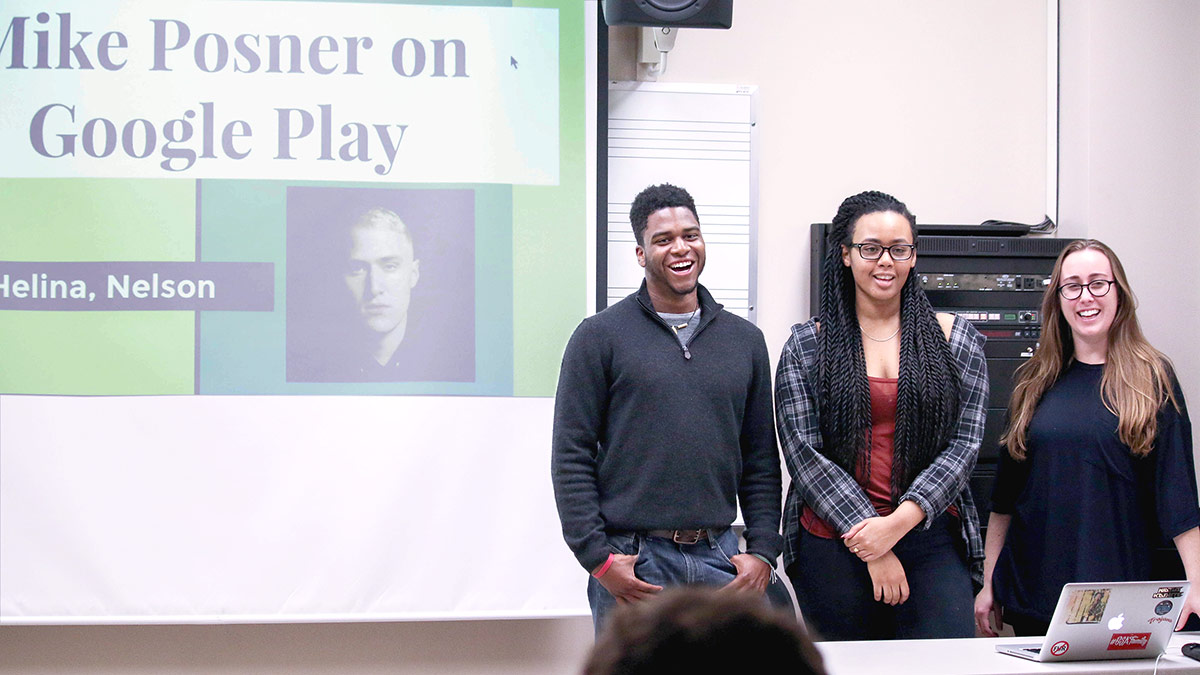
Students Nelson Thomas, Helina Seyoum, and Jillian Morabito (’16) pitched their ideas to the class last spring. (Photo/Erin Offenhauser)
Life lessons learned
When the students pitch their ideas each week, they are evaluated based on professional standards.
“Our professors are not afraid of hurting our feelings,” said Carina Glastris ’18, an Economics major who minors in Music Industry. The level of honesty in the class is apparent, which only furthers the skills the students are able to gain through constructive criticism.
Even if the professors think an idea won’t work, Caitlin Harriford ’17, a Business Administration major and Music Industry minor, has learned through her experience that it isn’t necessarily the end.
“If someone says no, you don’t need to take that as the end-all-be-all,” Harriford said, especially if it’s an idea you really believe in. Harriford mentioned one of Young’s many lessons about the course: if one person says no, someone else might say yes — it all depends on the circumstances.
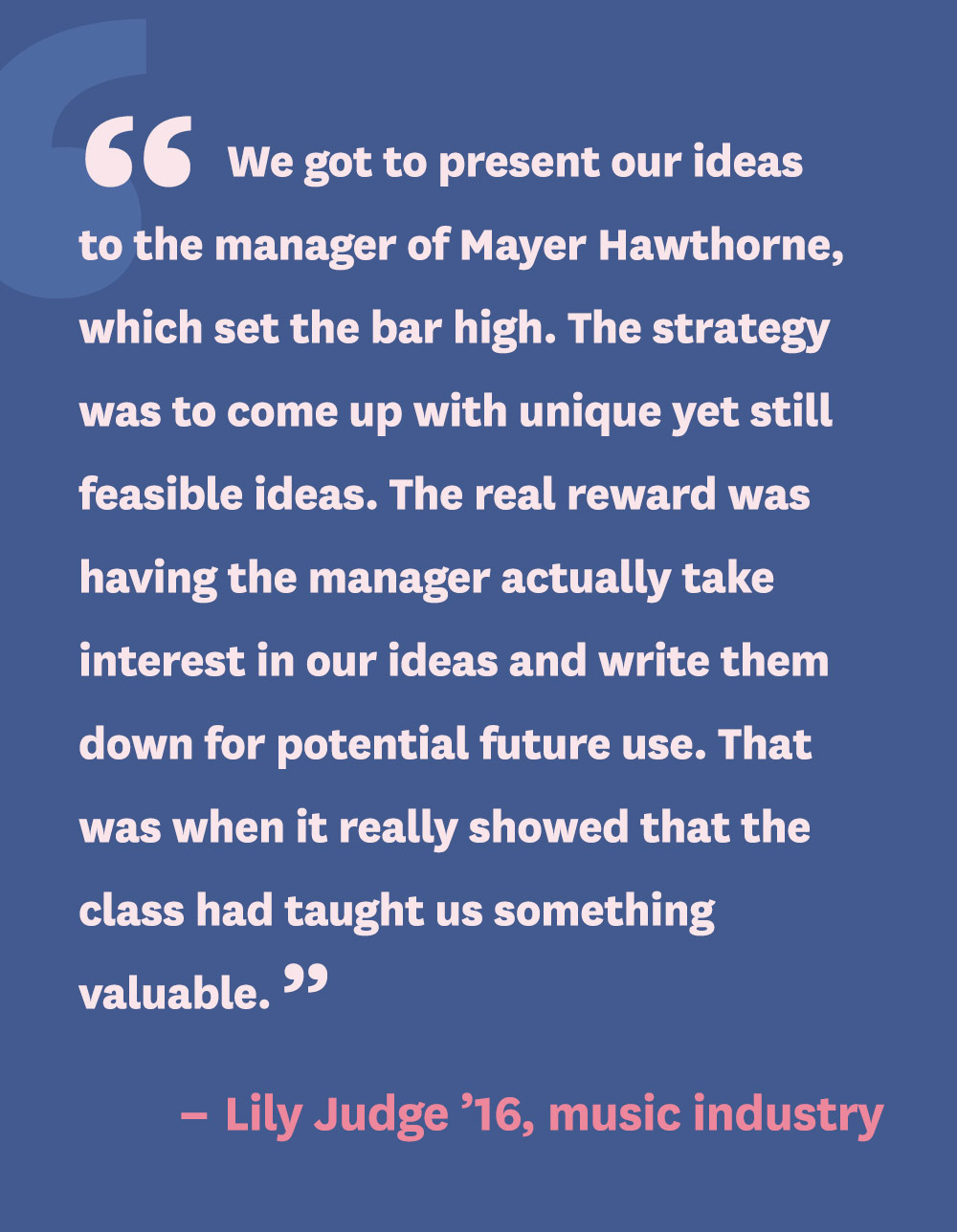
In the course, results are important, but so is the trajectory of each student’s learning.
“The amount these students grow is simply enormous,” said Young. “It’s a next-level kind of transformation when they deliver real value for artists and music companies that might just be their next employers. I love this kind of win-win outcome and you just can’t get this kind of experience anywhere else.”
The students are also expected to work together. Opportunities abound for each of the 12 students to bounce ideas off each other and let their strengths shine while learning new skills.
“Everybody thinks really differently,” Glastris said. As she reached the end of the class last semester, she looked to her peers’ development to see where she could work harder.
“I want our students to be more than just well-informed, or to have lots of ideas,” said Young. “I want them to turn heads in this business with how savvy, passionate and self-disciplined they are right when they hit the ground, even at an entry-level job.”
“These are the kinds of classes that should be a little more mainstream,” said Judah Joseph ’16, Music Industry. Joseph stressed the need for “real life application courses that are actually preparing you for the work force and meeting the demands of employers in the entertainment industry.”
“Our students are mentored by doers,” said Young. “We expect our folks to raise the bar so that we’re adding unexpected value for the next generation of artists, employers and entrepreneurial ventures, no matter how hard each new challenge is.”
